#rikidozan
Text

The fathers of Puroresu
Rikidozan, Giant Baba and Antonio Inoki
#rikidozan#giant baba#antonio inoki#puroresu#pro wrestling#njpw#jwa#ajpw#pro wrestling noah#wwf#wcw#wrestler#fan art#roman trevisiol#roman_henshin#artists on tumblr#posca marker#posca pens#posca#illustration
100 notes
·
View notes
Text
youtube
Pro-wrestling Arrives in Japan, 1961
70 years ago, on 2-19-1954, Rikidōzan brought pro wrestling to Japan with his Japanese Pro Wrestling Association and their first tour.
Rikidōzan & Masahiko Kimura wrestled the Sharpe Brothers for the NWA Tag Team Championships to a 61-minute draw in the main event.
13k in attendance. It's said that 73% of all televisions in Japan watched the broadcast live.
via: Project Territories
7 notes
·
View notes
Text
Dark Side Of The Ring season 5 wishlist
My ideas for what I wanna see in season 5
Gentleman Chris Adams
The Ringboy Scandal
Bill DeMott
The Knight Family
Wrestlers Court
Terry Gordy
Hazing
The Divas Search
Ashley Massaro
Rikidozan
Buck Zumhofe
Hardbody Harrison
Heroes Of Wrestling
Adrian Street
The Kliq
Perry Saturn
IWA Mid South
Muhammad Hassan
#Dark Side Of The Ring#Dark Side Of The Ring Season 5#Gentleman Chris Adams#Pat Patterson#Mel Phillips#Tom Cole#Terry Garvin#Bill DeMott#Saraya Knight#Ricky Knight#Terry Gordy#Ashley Massaro#Rikidozan#Buck Zumhofe#Hardbody Harrison#Heroes Of Wrestling#Adrian Street#Scott Hall#Kevin Nash#Shawn Michaels#Triple H#Perry Saturn#Muhammad Hassan
9 notes
·
View notes
Text

13 notes
·
View notes
Text




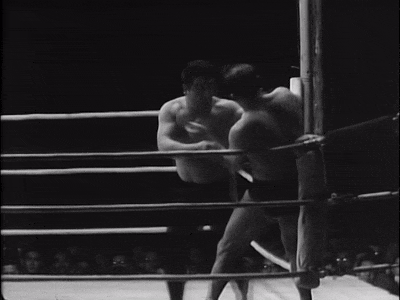
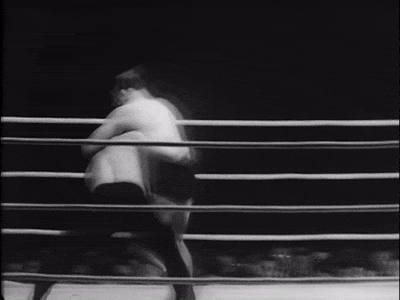

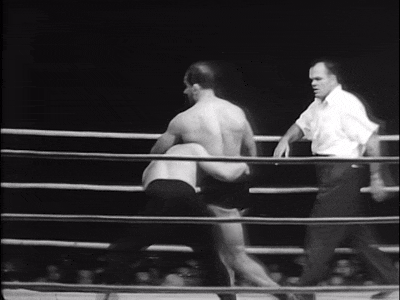

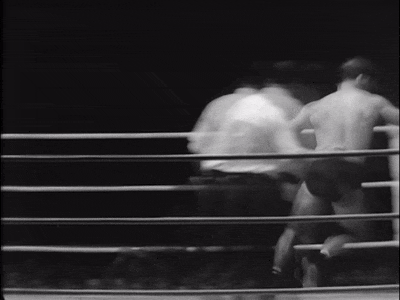

October 6, 1957 Rikidōzan battles Lou Thesz for the NWA World Heavyweight Championship in a sixty minute draw seen by 87% of the Japanese television audience.
9 notes
·
View notes
Photo
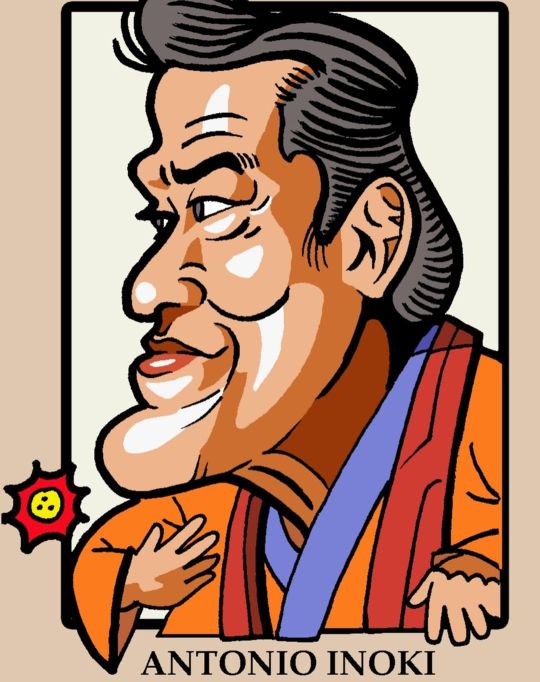
Yay! I did one of those artworks that is convertable to "free slaps" in the afterlife. Rest easy, Japan's OG Chinfather: Antonio Inoki. #InokiKaFairyKo #AntonioInoki #NJPW #FreeSlaps #CollisionInKorea #Enzuigiri #Chin #Wrassln #WrestlingIsReal #Gintama #Rikidozan #MuhammadAli #GulfWar #Babalu #BabalaAsawaNiBabalu https://www.instagram.com/p/CjQbVLSJ65P/?igshid=NGJjMDIxMWI=
#inokikafairyko#antonioinoki#njpw#freeslaps#collisioninkorea#enzuigiri#chin#wrassln#wrestlingisreal#gintama#rikidozan#muhammadali#gulfwar#babalu#babalaasawanibabalu
0 notes
Text
I think one of the things that’s making reading the history of pro wrestling is when all of a sudden other social issues kinda pop up and yeah it’s not like that’s unique to wrestling but it’s interesting nonetheless.
For example the guy that’s considered to be the father of Japanese professional wrestling was a guy named Rikidozan whose background was in sumo. The name “Rikidozan” was actually his shikona which is basically someone’s sumo name they adopt but his government name was Mitsuhiro Momota while his birth name was Kim Sin-rak because the father of Japanese pro-wrestling was a Korean guy born in Korea. When he was young a Japanese businessman saw a lot of potential in him and sponsored his travel to Japan to attend a sumo dojo but his Korean ancestry was still known which resulted in a lot discrimination and harassment so he decided to get adopted by his sponsor so he could take his name and disguise his Korean heritage. That helped when it came to racism from common people but backstage there was still some amount of discrimination which culminated in a pay dispute when Rikidozan felt he wasn’t being properly compensated given his success and popularity because of his Korean heritage which caused him to retire in 1950.
After Rikidozan retired from sumo he worked as a supervisor for a construction company owned by a different Japanese businessman that also helped sponsor his sumo career named Shinsaku Nitta. Now during the war Shinsaku Nitta was an officer at a POW camp for Americans but he developed a reputation for being a “good guard” in that he felt compassion for the prisoners and would sneak extra rations or cigarettes to them. After the war word of mouth about this “good guard” spread and resulted in Nitta’s construction company doing very well during the occupation and reconstruction of Japan as it meant he was highly prioritized for contracts since a lot of GIs basically said that they owed their lives to this compassionate Japanese guard that would risk his own life and well being to save them from starvation. And one day some Americans in Tokyo decided it would be fun if they organized a pro wrestling tour with American wrestlers from Hawaii matched up against local guys and since Nitta was very tight with the American community he was able to go “Oh! If you guys are looking for Japanese people that would be good for this then I definitely know a guy” and got Rikidozan booked for the tour.
And so after only a month of training introducing Rikidozan to the world of American pro-wrestling he managed to wow the American organizers and he wound up being booked to be the main Japanese wrestler who would go over the visiting American opponents. Since this was post-WW2 Japan under Japanese occupation the crowds absolutely ate it up seeing this Japanese champion who was able to stand up to and defeat one American after another. He would then go on to tour heavily in the USA and would eventually found the Japan Pro Wrestling Alliance the first Japanese pro wrestling promotion and direct precursor to NJPW and AJPW.
But yeah anyway I think that’s kinda interesting. A guy who spent much of his life subjected to anti-Korean racism and discrimination in Japan which wound up ending a promising sumo career early would eventually end up becoming a hugely popular hero and symbol of restored Japanese pride and dignity in the post-war era.
289 notes
·
View notes
Text
it's far from the worst example of how people propagandize North Korea, but the way that people talk about the Collision in Korea wrestling event is very much a great example of what it's like
the background for the event is that Antonio Inoki, famed Japanese wrestler and, at the time, aspiring politician, was seeking to mend ties with North Korea. his wrestling mentor, Rikidozan, was North Korean, which helped his popularity in the country, so he proposed that he could run a show in the country. for the show, he enlisted a group of Japanese and American wrestlers, and they went to North Korea and did a wrestling together
one of the things that people always mock the event for is the crowd. crowds are a big part of wrestling events, and despite the crowd being the biggest ever (355,000 over two days), they were pretty quiet for most of it. it was only in a few matches, particularly Inoki's match, that they finally started cheering and making noise
people use this to say, "oh those brainwashed North Koreans didn't even know what wrestling was. they just attended the event because otherwise their families would have been killed". but it's actually pretty typical in wrestling for performers to get little reaction if the crowd isn't familiar with them, and in this case the show was built on b and c-listers from companies that crowd had probably never seen before. crowd reactions can also vary from culture to culture, like how British, American, and Japanese crowds all act differently, so of course this different culture will act differently based on what's typical for them
the way people insist that attendance was mandatory and the attendance number is made up is also pretty telling. like yes the number is probably exaggerated because sports attendance is always exaggerated regardless of sport, but I'm sure the people who attended the show were people who wanted to be there, and I'm sure a lot of people would have wanted to attend to, considering how unique of an event it was
any weirdness around the show is pretty easily explained by treating North Koreans as humans instead of weird creatures, but most americans (or really, people in the anglosphere) don't think of North Koreans as human
11 notes
·
View notes
Text
The Thrill Of Anticipation
[This was originally written back in February or March of 2022, pitched and accepted by FanFyte back when it was still a thing. It never ran, although I did get a kill fee for this, so in that respect I did get compensated. I miss FanFyte and I would have written for them forever. C’est la vie. Anyway, I hope you enjoy this. If you want to see the match I am talking about, links are below after the piece.]

As New Japan Pro Wrestling is in the midst of its 50th Anniversary year in 2022, one might be tempted to recount the glorious matches, brutal feuds and classic moments that made people become fans in the first place. However, as a quick look at this very website will tell you, wrestling is made up of a lot more weird ideas, goofiness, and noble failures than it is made up of classics.
NJPW’s founder Antonio Inoki is one of the greatest wrestlers and promoters ever to have graced the business. This much cannot be argued against. Inoki had a LOT of ideas about how pro wrestling can, could, and should be. Not every idea hit the mark. Occasionally, the reason was, the idea was way ahead of its time.
The Bed Of Nails match between Antonio Inoki v. Umanosuke Ueda that took place on 2/8/1978 at Tokyo Nippon Budokan, the penultimate night of that year’s New Years Golden Series tour, could definitely be seen as one of those Way Ahead Of Its Time ideas. But was it a bad match in of itself? That is debatable.

First, some context for those not familiar with Inoki’s opponent on the night. Umanosuke Ueda was born Hiroshi Ueda on 6/20/1940 in Yatomi, Aichi Prefecture. His eventual ring name would come from a historical figure of the same name, a samurai who was part of the Shinsengumi, the shogun’s personal police force from 1863 – 1869. He debuted in 1961 for Japan’s original wrestling promotion, the Japan Pro Wrestling Alliance, whilst Rikidozan was still the top man in the company. He would also wrestle in Los Angeles and other NWA territories, bouncing around various promotions, including a brief stint in All Japan Pro Wrestling in 1973, and the IWE promotion in Japan, where he would briefly become an IWA World Heavyweight Champion.
What set Ueda apart in those days, were his look, his style, and his alliances. Ueda was the innovator of the bleached-blonde hair look in Japanese wrestling, which nowadays is pretty common, but in the early 1970s was considered scandalous in Japan. He was considered a “traitor heel,” not only because of his looks, but also his lawless brawling style. Wrestlers such as NJPW’s Tatsutoshi Goto and FMW’s Mr. Gannosuke would find inspiration in Ueda’s look and antics. More recently, NJPW talents Toru Yano and EVIL would be influenced by Ueda for their characters.
Then there was the matter of Ueda’s chosen partner by the time he arrived in New Japan in 1977 – the hated foreign nemesis, Tiger Jeet Singh. Inoki’s rivalry with Singh is pretty storied, and the combination of Singh and Ueda brought fan animosity that most heels would kill for in this age of wrestling. It’s worth noting, that the combo of Ueda & Singh were the first tandem to ever win titles in both NJPW and AJPW.
The pair ran roughshod, terrorizing NJPW, until the match was made for the biggest date of the 1978 New Years Golden Series. Antonio Inoki would face Umanosuke Ueda in a match where the ringside floor area would be covered by boards with nails sticking up from them. A decade before the advent of FMW, W*ING, and what we know now as deathmatch wrestling, and New Japan Pro Wrestling was running what they dubbed a “Nail Floor Death Match” in the hallowed halls of Budokan.
When you advertise a Bed Of Nails deathmatch, it comes with certain expectations in the modern fan’s mind. Did it meet those expectations? Well… not quite.
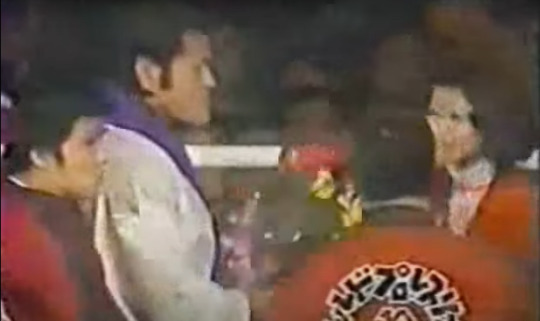
The match started off as you’d figure. Ueda was seconded by Singh, both wearing matching red and white outfits (I think – the video quality wasn’t the greatest), complete with t-shirts reading CAPITAL on the front, with their names on the back of the shirts. Inoki meanwhile arrives in the ring in his customary robe and scarf. Inoki is presented with not one, but two floral bouquets in the ring. Ueda had to dodge trash being thrown at him. Clearly, ownership has its privileges.
A VERY BUFF REFEREE forces Singh to leave the ringside to much drama, as the match begins with some good ol’ RASSLIN. Inoki is the first to gain control here with an early enzuiguri that nearly sends Ueda over the ropes for the first tease of a spill into the nails, to the crowd’s delight.
Ueda manages to get Inoki on the ground with a double wristlock, but Inoki powers out of it, almost dumping Ueda over the ropes to the waiting nails below. More of the same comes when Inoki ducks a clothesline from Ueda, Ueda nearly falling over AGAIN, but that transitions into a Boston Crab from Inoki instead.

The biggest moment of suspense comes as Ueda does finally get Inoki on the ground, and begins kicking him out of the ring, under the ropes, trying to get Inoki to fall. Inoki deftly hangs on to a rope for dear life, as the crowd screams, not wanting their hero to fall and injure himself in the nails below.
Inoki manages to get to his feet, and get himself around the ringpost to apply an armbar to Ueda through the ropes! This leads to a minute or so where it looks like BOTH Ueda and Inoki will go to the floor with the nails waiting for them. The crowd is on needles and pins, so to speak, eager to see whether or not one or both of these men will hit the floor.
Ultimately, Inoki and Ueda are both in the ring once more, as Inoki attacks Ueda’s arm and shoulder. This leads to a towel flying into the ring, as the bell rings, with Inoki winning via TKO. Inoki continues to attack Ueda’s arm, with Ueda with yet another tease to the outside. Ueda’s arm is put into a makeshift sling with the towel, once the VERY BUFF REF and Singh manage to get Inoki off the prone Ueda.
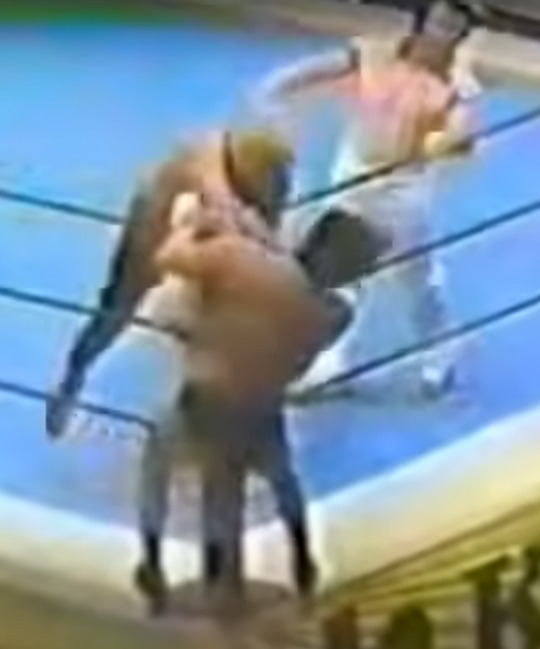
Despite the stipulation, despite the teases and suspense, neither Antonio Inoki nor Umanosuke Ueda ever actually make it onto the boards of nails outside the ring. Was this a waste of a stipulation? Did the match fail because of this?
The answer is: it depends on what you were looking for to begin with.
Had this match taken place in the mid-90s, the time of Kawasaki Dream (aka “King Of The Deathmatch,” the infamous tournament won by Mick Foley) and exploding rings, there would have been, at minimum, three spots with Inoki, Ueda, or both going full on into the nails, blood gushing from them. No question about that. But by then, the definition of what a “deathmatch” was had changed.
Audience expectations had changed by then as well. In 1978, Bed Of Nails deathmatches were not common at all. Barbed wire matches were a thing, but usually with the wire wrapped around the existing ropes. Wrestlers were not shy about bleeding either, even back then.
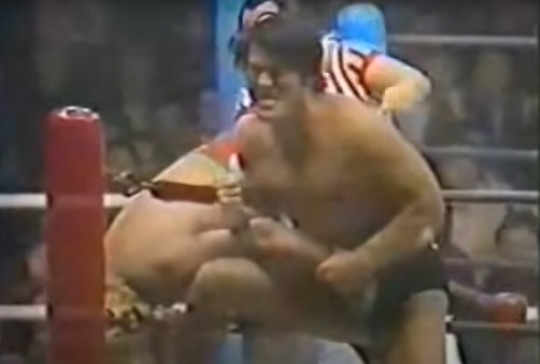
On the other hand, take a look at the horror genre. Some works are atmospheric, with fog and shadows, merely hinting at the terrors lurking, in order to create a mood of suspense. Others are gory, filled with jump-scares and visceral imagery. Neither are a wrong method, neither one is intrinsically superior to another. It all depends on what the expectations are, and what’s trying to be accomplished. The old Universal monster movies, FRIDAY THE 13TH and DARK WATER all work as horror, for many and varied reasons. For the pro wrestling audience in Budokan in February 1978, the mere anticipation of one of the two, or both, competitors MAYBE going into the nails was enough. And going back and watching the match, the fans were engaged and into the match all throughout. Sure, the danger was never actualized, so perhaps it fails the Chekhov’s Gun test. To the fans in Budokan, that didn’t matter.
Would the nail boards not being there in the first place have changed the match itself? Beyond a few spots, most likely not. All that said, the nails on the floor did add a little extra juice to it going in. (A very good example of a great Bed Of Nails deathmatch? Look up Ryuji Yamakawa v. Tomoaki Honma for the BJW Deathmatch Heavyweight Championship from 6/20/1999.)
Antonio Inoki liked to experiment. Experiments don’t always work. Perhaps the most infamous of his “deathmatches” was the Island Deathmatch, from 10/4/1987, a literally 2+-hour match on an island between Inoki v. Masa Saito. I don’t recommend it.
Of course, less than two years after Inoki’s “epic” on Ganryujima, Atsushi Onita would form Frontier Martial Arts Wrestling, and forever alter what a “deathmatch” meant to wrestling at large.
Inoki’s experiment on 2/8/1978 may not have worked through modern eyes, and modern expectations of that match stipulation. As a match, it was just fine. Sometimes, it’s the thought that counts.
Links to the match:
Part 1: https://www.youtube.com/watch?v=uamsWjxvIno
Part 2: https://www.youtube.com/watch?v=BDZHlAaYeXQ
Part 3:https://www.youtube.com/watch?v=eBY8y1eacuc
6 notes
·
View notes
Text

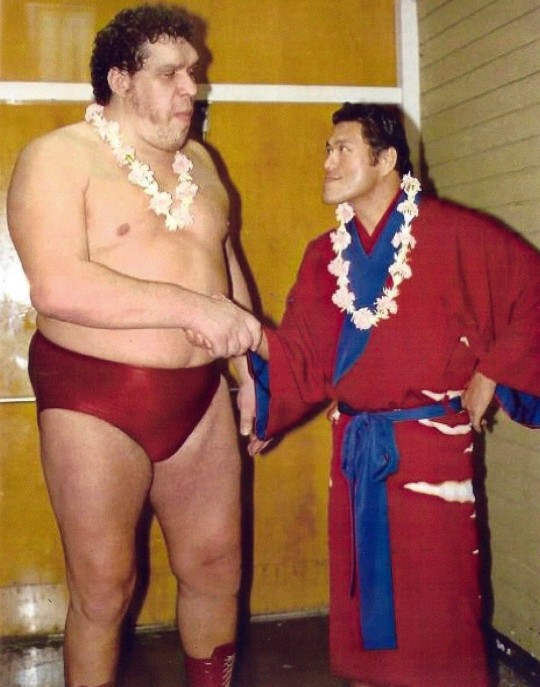
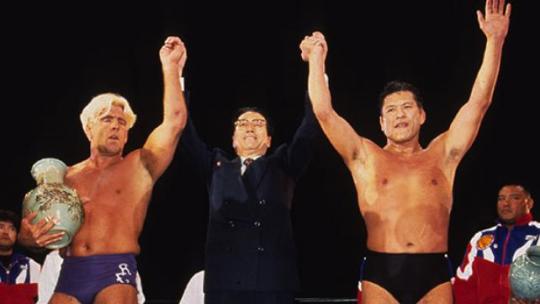

just learned that antonio inoki has passed away. while i haven't mentioned him on my blog a lot, he truly was a wrestling legend that i looked up to.
most famous for founding new japan pro wrestling, antonio inoki has done some incredible and fascinsting things in his life.
being trained by rikidozan, the father of puroresu.
when muhammad ali challenged any asian fighter to go up against him and have the opportunity to win $1M dollars, antonio inoki accepted. the match was a draw, but to see a fight between a world famous boxer and a pro wrestler was just so incredible, (including inoki kicking ali's legs 107 times and not being disqualified).
Being the first asian man to hold the WWF heavyweight championship, (however his reign is not recognised by the WWE).
Putting together a band of wrestlers to go and have a wrestling show in north korea, as an opportunity for peace (not really successfull,,,, but fascinating), also drawing the largest wrestling crowd in history (for obvious reasons but a record non the less)
1943 - 2022
8 notes
·
View notes
Text
reveal your watch and rewatch drama list
tagged by @godotismissingx
I’m mixing dramas and movies:
-> currently watching:
Vincenzo – I watched the first episode yesterday and going to continue.
One Piece – it's a weekly tradition with my brother. We are watching it and complaining about peacing. The story is so engaging. And the animation has gotten really good recently.
SPY X FAMILY – every Saturday. Read manga first, and it was awesome. Love the found family trope. Besides, the Forgers are hilarious trying to be a normal family.
Crash Landing On You - I stopped on episode 5 almost two years ago. Hyun Bin and Son Ye-jin managed to get married. I need to finish it.
Leverage (Korean version) – I'm watching it occasionally. I prefer the US version, but Korean is not bad. Currently on episode 11.
Bridgerton – started watching from season 2 because adore the enemies to lovers trope. Now I have to watch season 1.
Book of Fish – watched two first minutes and needed to stop because I had to do a task for Uni. Need to go back to it. Sol Kyunggu waits for me.
Escape from Mogadishu – Similar to the Book of Fish. Watched the first 7 minutes, and life called me. As well need to go back for it. Because of Koo Kyo Hwan.
-> Rewatch:
The Merciless – always ready to rewatch that movie. It’s my life now. I accepted it.
D.P. – there are only 6 episodes? And it’s soo good? I want season 2.
Beyond Evil – mostly rewatching episodes 1, 8, and 16. But the whole show was incredible.
Leverage (US Version) – my comfort show. Always good to go back to it. Group of thieves scamming bad people. I love it.
-> to watch list
Tracer – Im Siwan. I need to watch it now that all episodes are out.
Kinnporsche – the gifs on tumblr are teasing me. Also, mafia BL? I’m in. And the bath scene. (⁄ ⁄•⁄ω⁄•⁄ ⁄)⁄
Pachinko – the premise is interesting. And the opening is great.
The Uncanny Counter – on my list for a long time. Need to watch it finally.
The Crowned Clown – Yeo Jingoo. And period drama.
Semantic Error - BL
Tinted With You – BL
Peppermint Candy – Sol Kyunggu. And from the interviews, he is very proud of that one. So I need to watch it.
Kingmaker – Sol Kyunggu won Baeksang for it. I was supposed to watch it a long time ago. Min recommended it to me.
Rikidozan – Sol Kyunggu as well.If someone knows where to watch it let me know.
Sympathy for Mr. Vengeance – And Shin Hakyun. In minty hair.
I have bingo with Sol Kyunggu movies. I want to watch them all. My to-watch list has over 50 titles so I will stop here.
Tagging: (I don’t know who was already tagged, sorry) @daxianme, @verochkasnightmarecorner, @yardmargs, @fridayvelvet, @sofarraway, @igonecrazy, @requestomaestro and who wants to and I forgot to mention!
#meme#ask meme#watchlist meme#stuff to watch#need more time#and i will finish it#vincenzo#one piece#spy x family#crash landing on you#leverage#bridgerton#book of fish#escape from mogadishu#the merciless#d.p.#beyond evil#tracer#kinnporsche#pachinko#the uncanny counter#the crowned clown#semantic error#tinted with you#peppermint candy#kingmaker#rikidozan#sympathy for mr. vengeance
7 notes
·
View notes
Text
if i ever get stabbed in a fight im pissing in the wound so i can die like rikidozan
0 notes
Text
Kurt Angle Wants Pro Wrestlers To 'Go Back To The Way It Was,' Art Is In Storytelling
As life goes on, things change, and pro wrestling is no different. Over the years, the profession has evolved from the days of Bruno Sammartino, Rikidozan, and El Santo into the modern age of wrestlers such as Seth Rollins, Kenny Omega, Kazuchika Okada, and El Hijo del Vikingo. And for Kurt Angle, a man of an old-school mentality who is familiar with the modern style, it’s a change that’s been…
View On WordPress
0 notes
Text
[ad_1]
Former skilled wrestler Antonio Inoki shouts at a press convention in Tokyo on August 21, 2014.
Yoshikazu Tsuno /AFP through Getty Images
conceal caption
toggle caption
Yoshikazu Tsuno /AFP through Getty Images
Former skilled wrestler Antonio Inoki shouts at a press convention in Tokyo on August 21, 2014.
Yoshikazu Tsuno /AFP through Getty Images
Antonio Inoki was revered for by no means being afraid of a problem — whether or not it was dueling heavyweight champion Muhammed Ali or negotiating the discharge of hostages with the Iraqi authorities. That's why he was usually known as "the fighting spirit that burns." Inoki died at age 79 after battling a uncommon illness known as amyloidosis, his firm, New Japan Pro-Wrestling, introduced on Saturday. "His achievements, both in professional wrestling and the global community are without parallel and will never be forgotten," the skilled wrestling group wrote in a statement. Kanji "Antonio" Inoki was born in Yokohama, Japan in 1943 however spent most of his childhood in Brazil the place his household relocated. There, Inoki discovered a ardour for skilled wrestling and took on the title "Antonio." He was quickly recruited by Rikidozan, one of many the most famous Japanese wrestlers of all time, and returned to Tokyo to hitch the Japanese Wrestling Association. Inoki shortly turned extensively well-liked for his versatility and charisma in the ring. Years later, he went on to start out his personal wrestling firm in 1972 known as New Japan Pro-Wrestling.
Inoki's reached world fame in 1976 when he confronted Muhammad Ali in a rare wrestler vs. boxer match in Tokyo. The match turned credited for pioneering what is thought right this moment as blended martial arts, the place a fighter is allowed to make use of any type of fight.
Heavyweight boxer Muhammad Ali preventing the champion Japanese wrestler Antonio Inoki at Budokan Hall in Tokyo in 1976.
Keystone/Getty Images
conceal caption
toggle caption
Keystone/Getty Images
Heavyweight boxer Muhammad Ali preventing the champion Japanese wrestler Antonio Inoki at Budokan Hall in Tokyo in 1976.
Keystone/Getty Images
Off the ring, Inoki was recognized for his makes an attempt to forge peace and diplomacy via sports activities. In 1990, Inoki was instrumental in liberating 36 Japanese hostages held in Iraq. During his lifetime, the late wrestler additionally made greater than 30 journeys to North Korea, serving as one in every of Japan's few hyperlinks to the authoritarian regime. Most notably, Inoki organized two giant sporting extravaganza — one in 1995 and one other in 2014 — held in Pyongyang to garner worldwide consideration. The first occasion, generally known as "Collision in Korea" drew almost 380,000 spectators and was thought-about the biggest-pay-per-view in pro-wrestling history. In 1998, Inoki retired as a wrestler and in 2010, he was inducted to the WWE Hall of Fame. He is technically thought-about WWE's first-ever Japanese world champion however that title is not yet recognized by the group.
"Antonio Inoki was among the most respected men in sports-entertainment and a bona fide legend in his homeland," WWE wrote in a statement. "This passion for competition earned him the nickname "Moeru Toukon" amongst his peers, which translates to 'The fighting spirit that burns.'"
[ad_2]
Source link
0 notes

